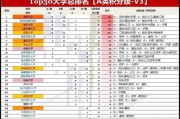Title: Understanding Hospital Big Data Collection: Strategies and Objectives
In modern healthcare, the collection and analysis of big data have become pivotal for improving patient care, enhancing operational efficiency, and facilitating research. Hospital big data collection encompasses a wide array of activities aimed at gathering, storing, and analyzing vast amounts of information generated within healthcare facilities. Let's delve into the key components and objectives of hospital big data collection:
1. Data Sources:
Electronic Health Records (EHR):
Capturing patient demographics, medical history, diagnoses, treatments, and outcomes.
Medical Imaging:
Storing and analyzing images such as Xrays, MRIs, and CT scans for diagnosis and treatment planning.
Laboratory Results:
Recording and analyzing data from various diagnostic tests, including blood tests, cultures, and pathology reports.
Administrative Data:
Collecting information on admissions, discharges, billing, and insurance claims.
Wearable Devices:
Integrating data from wearable technology to monitor patients' health remotely.
2. Data Collection Methods:
Automated Systems:
Implementing software solutions to automatically capture and organize data from various sources.
Manual Entry:
Inputting data manually into electronic systems, such as EHRs, when automation is not feasible.
Interoperability Standards:
Ensuring compatibility and seamless exchange of data between different systems and healthcare providers.
Data Mining:
Extracting valuable insights from existing datasets to inform decisionmaking and improve patient outcomes.
3. Objectives of Hospital Big Data Collection:
![]()
Enhancing Patient Care:
Identifying patterns and trends in patient data to personalize treatment plans, improve clinical outcomes, and prevent adverse events.
Operational Efficiency:
Optimizing resource allocation, streamlining workflows, and reducing inefficiencies to enhance the delivery of healthcare services.
Cost Reduction:
Identifying areas for costsaving measures, such as reducing hospital readmissions, minimizing medication errors, and preventing unnecessary procedures.
Research and Innovation:
Facilitating clinical research, population health studies, and the development of new medical technologies and treatments.
Predictive Analytics:
Anticipating patient needs, disease outbreaks, and healthcare trends through predictive modeling and data analytics.
Quality Improvement:
Monitoring key performance indicators, benchmarking against industry standards, and implementing quality improvement initiatives based on datadriven insights.
4. Challenges and Considerations:
Data Security and Privacy:
Safeguarding patient information against unauthorized access, breaches, and cyber threats in compliance with HIPAA regulations.
Data Integration:
Overcoming interoperability challenges and integrating data from disparate sources to create a comprehensive view of patient health.
Data Quality:
Ensuring accuracy, completeness, and consistency of data to derive meaningful insights and support evidencebased decisionmaking.
Ethical Considerations:
Addressing ethical dilemmas related to data ownership, consent, and the responsible use of patient information for research and analysis.
Resource Constraints:
Allocating sufficient resources, including staff training, technology infrastructure, and financial investment, to support effective data collection and analysis initiatives.
In conclusion, hospital big data collection plays a crucial role in driving improvements in patient care, operational efficiency, and healthcare innovation. By leveraging advanced data analytics and technology, healthcare organizations can unlock valuable insights to optimize clinical outcomes, enhance patient experiences, and shape the future of healthcare delivery.


